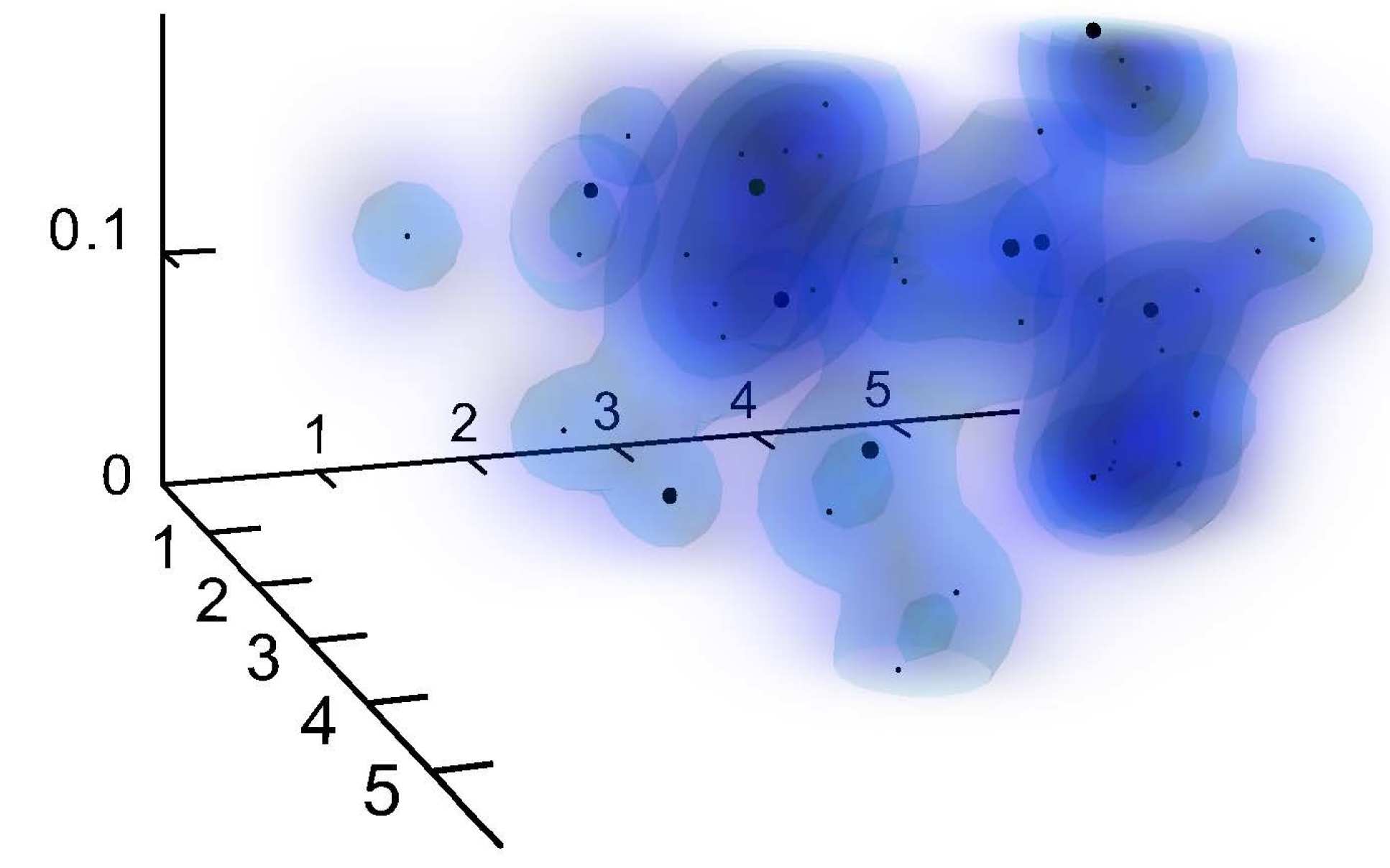Earliest cluster of forming galaxies discovered 13 billion light-years away

A 13-billion-year-old intense galaxy-forming region has been spotted, giving researchers clues as to how huge networks of galaxies develop.
In the present universe, fully formed galaxy clusters contain thousands of member galaxies including tens of massive galaxies. These clusters are the largest astronomical objects in the universe.
Tracing the formation of the largest structures in the universe, and the galaxies inside them, is the new frontier in extragalactic astronomy. Dr Dave Clements
They are connected to each other in a huge network of galaxies that form an essential part of the large-scale structure of the universe. However, astronomers are uncertain how they formed over the 13.8-billion-year history of the universe.
Now, an international team of astronomers, led by the National Astronomical Observatory of Japan and including Imperial College London researchers, has discovered a new ‘protocluster’ – a young cluster still in the process of forming hundreds of galaxies.
The protocluster is 13 billion light-years away, meaning it is observed as it looked 13 billion years ago, when the universe was only about 800 million years old (six percent of its present age). It is the earliest protocluster ever observed, meaning such large-scale structures were around very early in the universe’s existence.
The study of the protocluster, named z66OD, is published today in The Astrophysical Journal.
Pushing the frontier
Co-author of the study, Dr Dave Clements from the Department of Physics, said: “Tracing the formation of the largest structures in the universe, and the galaxies inside them, is the new frontier in extragalactic astronomy. This result pushes that frontier back still further, and provides some hints as to the processes behind protocluster galaxy formation.”
The protocluster was discovered using the Subaru, Keck, and Gemini Telescopes. The Subaru telescope had previously spotted a giant gaseous nebula called Himiko in the region, and this closer inspection revealed Himiko is a massive galaxy, accompanied by 11 other complete galaxies.

Lead researcher Yuichi Harikane, from the National Astronomical Observatory of Japan, said: “In order to know when a protocluster forms, we need to go back in time by looking deeper into space. However, a protocluster is a rare and special system with an extremely high density of galaxies distinct from other systems, and not easy to find.
“To overcome this problem, we used the new wide-field imager, Hyper Suprime-Cam on the Subaru telescope, and investigated a large area of the sky to make a huge map of the universe that included the rare protocluster.”
Map of the universe
In the map of the universe made by the Subaru telescope, the team first discovered a candidate of a protocluster in a location where galaxies were 15 times more concentrated than expected. The team conducted follow-up observations using the Keck and Gemini telescopes and confirmed 12 galaxies in the same location 13 billion light-years away.
Early observations of the protocluster have already turned up some surprises.
The team discovered that the number of stars forming inside the protocluster is five times larger than other galaxies with similar masses in the same period of the universe. They believe this is because of the large amount of gas in the system, a crucial ingredient for star formation, and eventually, galaxy formation.
The team were also surprised to discover that the massive Himiko galaxy was not in the centre of the protocluster. Co-author Masami Ouchi, from the National Astronomical Observatory of Japan and the University of Tokyo, said: “It is still not understood why Himiko is not located in the centre. This result will be a key to understanding the connection between galaxy clusters and massive galaxies.”
Next, the team will investigate the protocluster with the ALMA telescope to further probe its detailed structure.
-
‘SILVERRUSH. VIII. Spectroscopic Identifications of Early Large Scale Structures with Protoclusters Over 200 Mpc at z.6-7: Strong Associations of Dusty Star-Forming Galaxies’ by Yuichi Harikane et al. is published in The Astrophysical Journal.
Article text (excluding photos or graphics) © Imperial College London.
Photos and graphics subject to third party copyright used with permission or © Imperial College London.